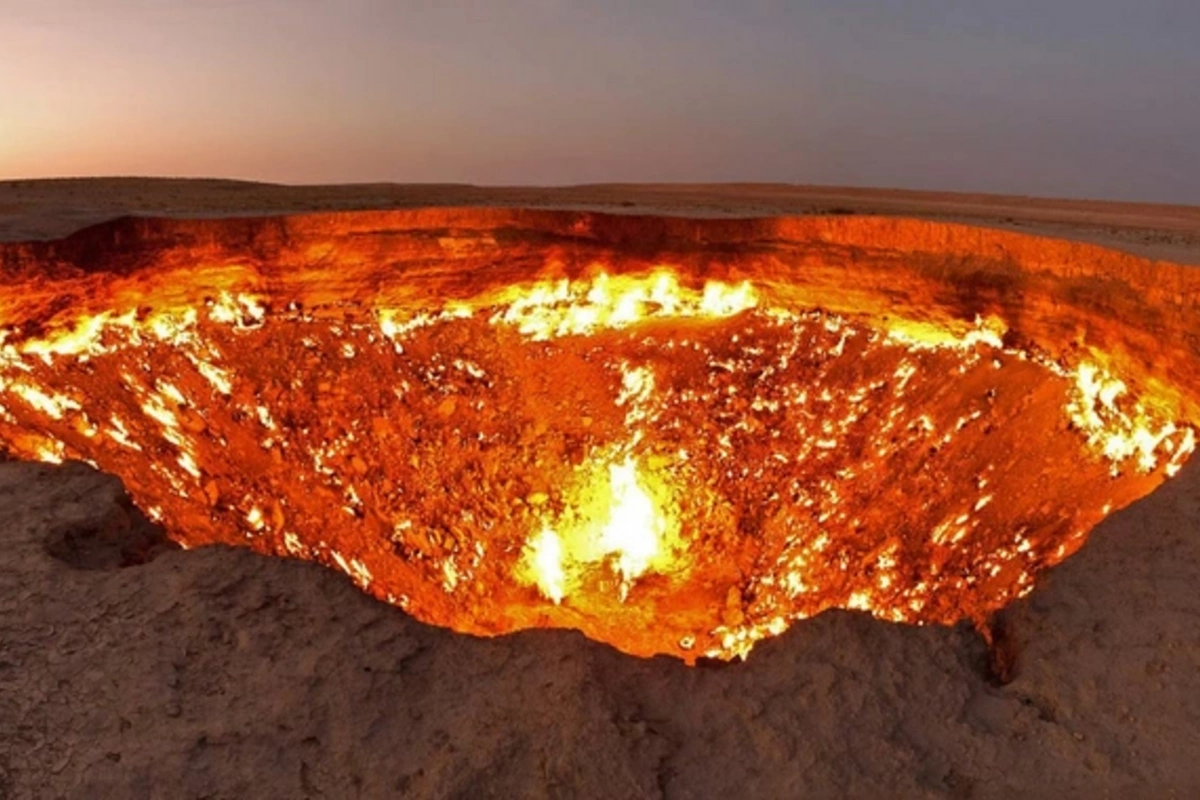11 Jun , 17:14
4

Gates of Hell: The Burning Mystery of the Karakum
In the very heart of the Turkmen Karakum desert gapes a colossal fiery chasm - Darvaza Crater, whose impressive width reaches 70 meters with a dizzying depth of almost 30. This burning hellish cauldron has not only become the country's landmark but has also turned into the region's largest source of methane pollution. The dramatic history of the crater begins in 1971, when a group of Soviet geologists, conducting drilling operations, accidentally opened a huge underground cavity filled with natural gas. To prevent deadly methane poisoning, the engineers made a fateful decision: to ignite the gas. According to their calculations, the flame should have died out after a few days, allowing work to continue. Instead, humanity received one of the most long-lasting man-made fires in the planet's history.
During periods of maximum activity, Darvaza blazed like a gigantic torch, flooding the night expanses of the Karakum with an ominous glow. The temperature in the red-hot crater reached an incredible 1000 °C, and the terrifying tongues of flame were clearly visible for many kilometers. Not surprisingly, local residents named this crater the Gates of Hell - its apocalyptic appearance and scorching heat destroyed all living things in the vicinity. In official documents, it is more poetically called the Glow of the Karakum, although this name only masks the frightening reality. Over the years, the fiery funnel has become a magnet for fearless tourists, thrill-seekers, and scientists striving to solve its mysteries.
However, recent data indicates: the legendary Gates of Hell are beginning to lose their power. At the scientific conference TESC 2025 in Ashgabat, representatives of the state company Turkmengaz reported a noticeable decrease in crater activity. In cooperation with the UN Environment Programme, an advanced satellite monitoring system MARS has been launched to track methane emissions. The results confirm: the hellish flames are gradually dying out. This is also facilitated by the targeted efforts of specialists who are drilling new wells around the crater and restoring old ones, redirecting gas flows around the fiery pit. It is possible that soon this burning symbol of Turkmenistan will remain only in legends and photographs.
The Darvaza Crater has become a place where human courage balances on the edge of recklessness. In 2022, Canadian explorer George Kourounis accomplished an unprecedented feat, becoming the first person to descend to the bottom of this fiery hell. Dressed in high